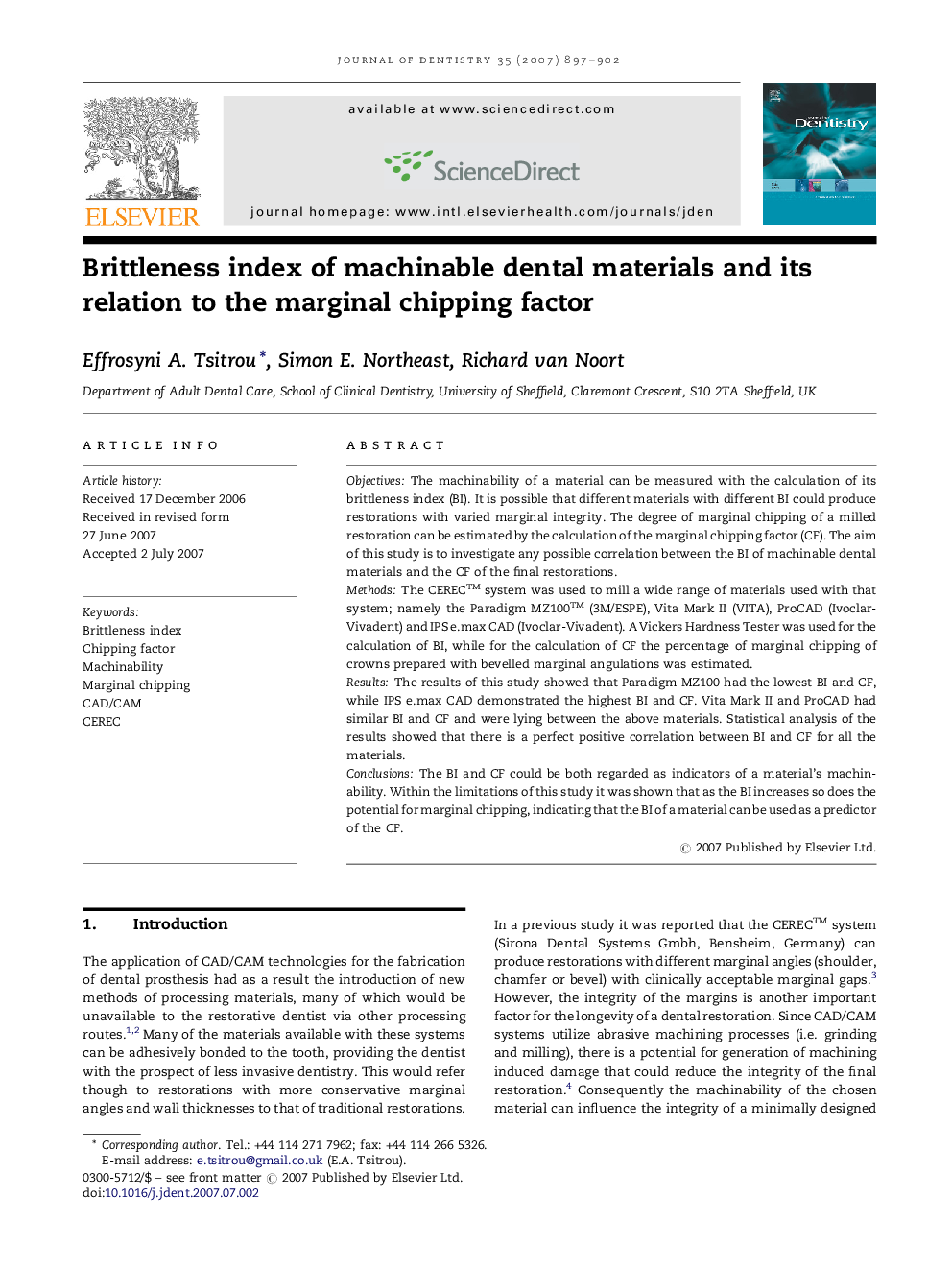| Article ID | Journal | Published Year | Pages | File Type |
|---|---|---|---|---|
| 3146206 | Journal of Dentistry | 2007 | 6 Pages |
ObjectivesThe machinability of a material can be measured with the calculation of its brittleness index (BI). It is possible that different materials with different BI could produce restorations with varied marginal integrity. The degree of marginal chipping of a milled restoration can be estimated by the calculation of the marginal chipping factor (CF). The aim of this study is to investigate any possible correlation between the BI of machinable dental materials and the CF of the final restorations.MethodsThe CEREC™ system was used to mill a wide range of materials used with that system; namely the Paradigm MZ100™ (3M/ESPE), Vita Mark II (VITA), ProCAD (Ivoclar-Vivadent) and IPS e.max CAD (Ivoclar-Vivadent). A Vickers Hardness Tester was used for the calculation of BI, while for the calculation of CF the percentage of marginal chipping of crowns prepared with bevelled marginal angulations was estimated.ResultsThe results of this study showed that Paradigm MZ100 had the lowest BI and CF, while IPS e.max CAD demonstrated the highest BI and CF. Vita Mark II and ProCAD had similar BI and CF and were lying between the above materials. Statistical analysis of the results showed that there is a perfect positive correlation between BI and CF for all the materials.ConclusionsThe BI and CF could be both regarded as indicators of a material's machinability. Within the limitations of this study it was shown that as the BI increases so does the potential for marginal chipping, indicating that the BI of a material can be used as a predictor of the CF.
